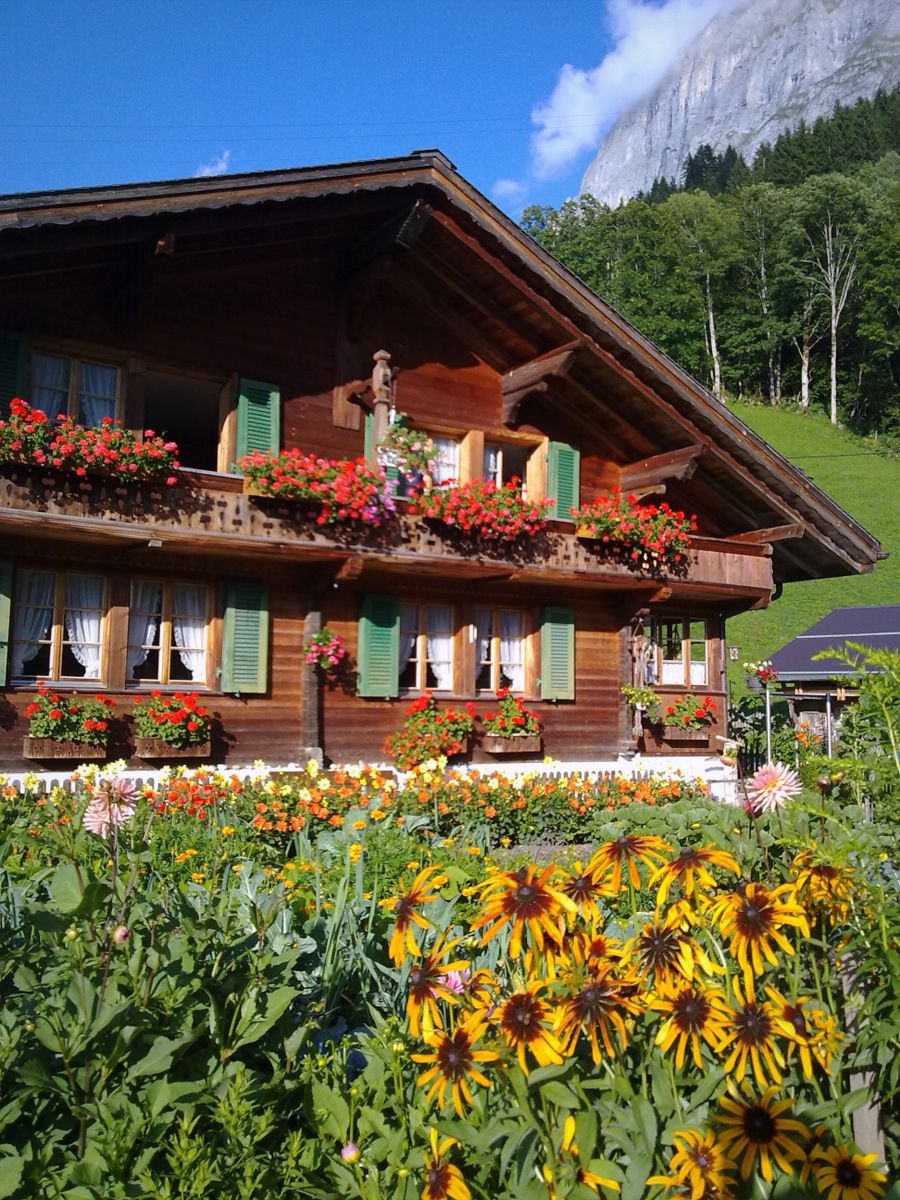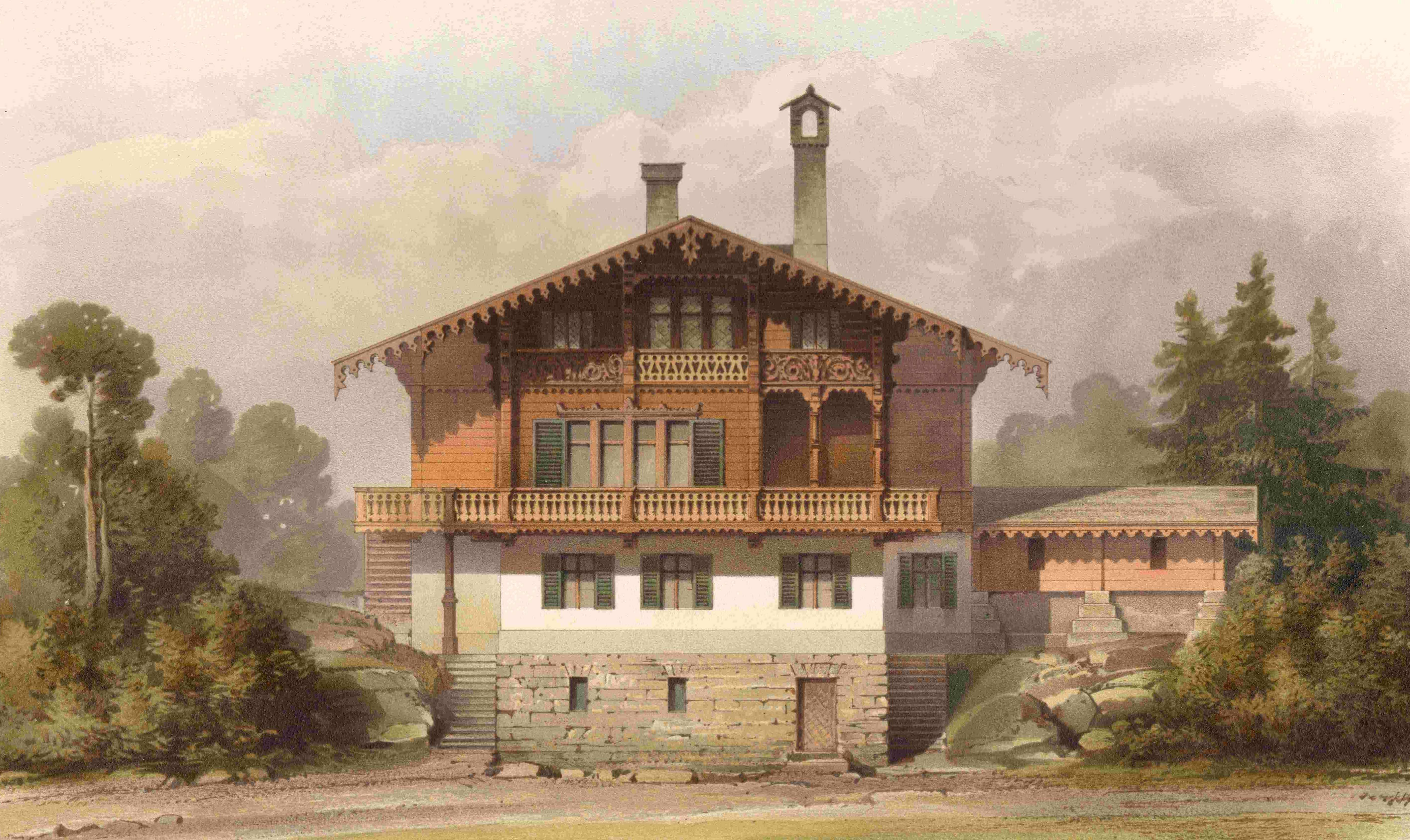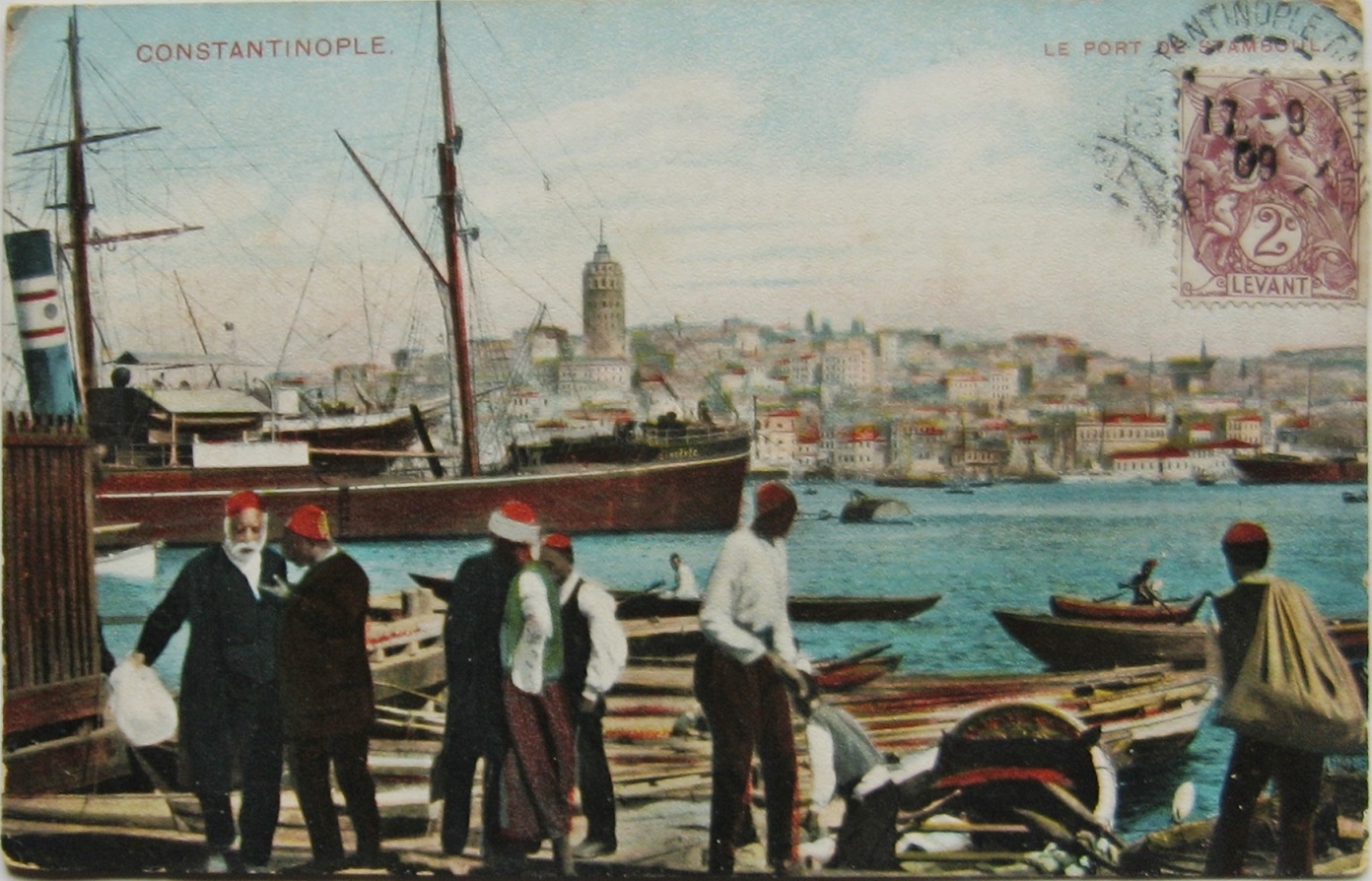|
Chalet
A chalet (pronounced in British English; in American English usually ), also called Swiss chalet, is a type of building or house, typical of the Alpine region in Europe. It is made of wood, with a heavy, gently sloping roof and wide, well-supported eaves set at right angles to the front of the house. Definition and origin The term ''chalet'' comes from the Arpitan-speaking part of Switzerland and the French Savoy region, and originally referred to the hut of a herder. It was often embedded in the ground for the sake of temperature buffering. Many chalets in the European Alps were originally used as seasonal farms for dairy cattle, which would be brought up from the lowland pastures during the summer months. The herders would live in the chalet and make butter and cheese in order to preserve the milk produced. These products would then be taken, with the cattle, back to the low valleys before the onset of the alpine winter. The chalets would remain locked and unused duri ... [...More Info...] [...Related Items...] OR: [Wikipedia] [Google] [Baidu] |
Mar Del Plata Style
The Mar del Plata style (, or ) is a vernacular architectural style very popular during the decades between 1935 and 1950 mainly in the Argentine resort city of Mar del Plata, but extended to nearby coastal towns like Miramar and Necochea. Its influence also spread to other regions of the country like Buenos Aires, Córdoba and Santa Fe. Origins The style is also often associated in Argentina with the ''californiano ''("Californian"), another vernacular type of house close connected with the American Mission Revival style. Mar del Plata style's features, however, are more related to the older Mar del Plata's picturesque architecture, an eclectic style already popular among the upper-class people who used to spend summertime in this resort city between 1885 and 1945, and to the American Craftsman style.Aliata, Fernando (2004). ''Diccionario de arquitectura en la Argentina: Estilos, obras, biografías, instituciones, ciudades''. Diario de Arquitectura de Clarín, p. 69. ... [...More Info...] [...Related Items...] OR: [Wikipedia] [Google] [Baidu] |
Swiss Chalet
Swiss Chalet is a Canadian chain of casual dining restaurants founded in 1954 in Toronto, Ontario, Canada. Swiss Chalet has locations in most Canadian provinces, but about 80% are in Ontario and there are currently none in Quebec or British Columbia. Swiss Chalet is among the holdings of Recipe Unlimited, which also owns the fast food chain Harvey's. Swiss Chalet and Harvey's franchises share many locations. Swiss Chalet franchises include a variety of points of sale. The company's locations generally have an architectural alpine theme, a dining room, a take-out counter, and delivery. Some feature drive-thru windows while other locations in certain urban areas are only take-out counters and are more akin to fast food restaurants. The brand also has an online food ordering system. Recipe Unlimited retails signature Swiss Chalet sauce, gravy, and marinades (as powdered mixes) in Canadian supermarkets. History The first Swiss Chalet restaurant, at 234 Bloor Street West in ... [...More Info...] [...Related Items...] OR: [Wikipedia] [Google] [Baidu] |
Swiss Chalet Style
Swiss chalet style (, ) is an architectural style of Historicism (art), Late Historicism, originally inspired by rural chalets in Switzerland and the Alps, Alpine (mountainous) regions of Central Europe. The style refers to traditional building designs characterised by widely projecting roofs and facades richly decorated with wooden balconies and carved ornaments. It spread over German Empire, Germany, Austria-Hungary, Kingdom of Italy, Italy, France and Scandinavia during the Belle Époque era. History Swiss chalet style originated in the German Romanticism, Romantic era of the late 18th- and early 19th-century, when the ideas of the English landscape garden inspired parks and residences in Germany, such as the Dessau-Wörlitz Garden Realm. It became highly appreciated on the continent by noble landowners who were impressed by the "simple life" of people living in the mountains. The chalet style soon spread over the German ''Mittelgebirge'' landscapes such as the Harz mountains ... [...More Info...] [...Related Items...] OR: [Wikipedia] [Google] [Baidu] |
Alps
The Alps () are some of the highest and most extensive mountain ranges in Europe, stretching approximately across eight Alpine countries (from west to east): Monaco, France, Switzerland, Italy, Liechtenstein, Germany, Austria and Slovenia. The Alpine arch extends from Nice on the western Mediterranean Sea, Mediterranean to Trieste on the Adriatic Sea, Adriatic and Vienna at the beginning of the Pannonian Basin. The mountains were formed over tens of millions of years as the African and Eurasian tectonic plates collided. Extreme shortening caused by the event resulted in marine sedimentary rocks rising by thrust fault, thrusting and Fold (geology), folding into high mountain peaks such as Mont Blanc and the Matterhorn. Mont Blanc spans the French–Italian border, and at is the highest mountain in the Alps. The Alpine region area contains 82 peaks higher than List of Alpine four-thousanders, . The altitude and size of the range affect the climate in Europe; in the mountain ... [...More Info...] [...Related Items...] OR: [Wikipedia] [Google] [Baidu] |
Vernacular Architecture
Vernacular architecture (also folk architecture) is building done outside any academic tradition, and without professional guidance. It is not a particular architectural movement or style but rather a broad category, encompassing a wide range and variety of building types; with differing methods of construction from around the world, including historical and extant and classical and modern. Vernacular architecture constitutes 95% of the world's built environment, as estimated in 1995 by Amos Rapoport, as measured against the small percentage of new buildings every year designed by architects and built by engineers. Vernacular architecture usually serves immediate, local needs, is constrained by the materials available in its particular region, and reflects local traditions and cultural practices. The study of vernacular architecture does not examine formally schooled architects, but instead that of the design skills and tradition of local builders, who were rarely given any att ... [...More Info...] [...Related Items...] OR: [Wikipedia] [Google] [Baidu] |
Holiday Camp
A holiday camp is a type of holiday accommodation, primarily in the United Kingdom, that encourages holidaymakers to stay within the site boundary, and provides entertainment and facilities for them throughout the day. Since the 1970s, the term has fallen out of favour with terms such as holiday park, resort, holiday village and holiday centre replacing it. As distinct from camping, accommodation typically consisted of wooden chalets, accommodation buildings arranged individually or in blocks. From the 1960s onward, many camps also added static caravan accommodation, and today, many static caravans are also termed holiday camps. History Cunningham's Young Men's Holiday Camp at Groudle (1894–1903) then Douglas (1904–1939) on the Isle of Man is sometimes regarded as the first holiday camp, but it differed from the definition (above), especially as accommodation was still in tents. Cunningham's was still open by the time Billy Butlin opened his first camp in 1936 (and stil ... [...More Info...] [...Related Items...] OR: [Wikipedia] [Google] [Baidu] |
Cottage
A cottage, during Feudalism in England, England's feudal period, was the holding by a cottager (known as a cotter or ''bordar'') of a small house with enough garden to feed a family and in return for the cottage, the cottager had to provide some form of service to the manorial lord.Daniel D. McGarry, ''Medieval history and civilization'' (1976) p 242 However, in time cottage just became the general term for a small house. In modern usage, a cottage is usually a modest, often cosy dwelling, typically in a rural or semi-rural location and not necessarily in England. The cottage orné, often quite large and grand residences built by the nobility, dates back to a movement of "rustic" stylised cottages of the late 18th and early 19th century during the Romantic movement. In British English the term now denotes a small, cosy dwelling of traditional build, although it can also be applied to modern construction designed to resemble traditional houses (" mock cottages"). Cottages ... [...More Info...] [...Related Items...] OR: [Wikipedia] [Google] [Baidu] |
American Craftsman
American Craftsman is an American domestic architectural style, inspired by the Arts and Crafts movement, which included interior design, landscape design, applied arts, and decorative arts, beginning in the last years of the 19th century. Its immediate ancestors in American architecture are the Shingle style, which began the move away from Victorian ornamentation toward simpler forms, and the Prairie style of Frank Lloyd Wright. "Craftsman" was appropriated from furniture-maker Gustav Stickley, whose magazine ''The Craftsman'' was first published in 1901. The architectural style was most widely used in small-to-medium-sized Southern California single-family homes from about 1905, so the smaller-scale Craftsman style became known alternatively as " California bungalow". The style remained popular into the 1930s and has continued with revival and restoration projects. Influences The American Craftsman style was a 20th century American offshoot of the British Arts and ... [...More Info...] [...Related Items...] OR: [Wikipedia] [Google] [Baidu] |
Kuwait
Kuwait, officially the State of Kuwait, is a country in West Asia and the geopolitical region known as the Middle East. It is situated in the northern edge of the Arabian Peninsula at the head of the Persian Gulf, bordering Iraq to Iraq–Kuwait border, the north and Saudi Arabia to Kuwait–Saudi Arabia border, the south. With a coastline of approximately , Kuwait also shares a maritime border with Iran, across the Persian Gulf. Kuwait is a city-state, most of the country's population reside in the urban area, urban agglomeration of Kuwait City, the capital and largest city. , Kuwait has a population of 4.82 million, of which 1.53 million are Kuwaiti nationality law, Kuwaiti citizens while the remaining 3.29 million are Expatriates in Kuwait, foreign nationals from over 100 countries. Kuwait has the world's third List of sovereign states by immigrant and emigrant population, largest number of foreign nationals as a percentage of the population, where its citizens make up less th ... [...More Info...] [...Related Items...] OR: [Wikipedia] [Google] [Baidu] |
Egypt
Egypt ( , ), officially the Arab Republic of Egypt, is a country spanning the Northeast Africa, northeast corner of Africa and Western Asia, southwest corner of Asia via the Sinai Peninsula. It is bordered by the Mediterranean Sea to northern coast of Egypt, the north, the Gaza Strip of Palestine and Israel to Egypt–Israel barrier, the northeast, the Red Sea to the east, Sudan to Egypt–Sudan border, the south, and Libya to Egypt–Libya border, the west; the Gulf of Aqaba in the northeast separates Egypt from Jordan and Saudi Arabia. Cairo is the capital, list of cities and towns in Egypt, largest city, and leading cultural center, while Alexandria is the second-largest city and an important hub of industry and tourism. With over 109 million inhabitants, Egypt is the List of African countries by population, third-most populous country in Africa and List of countries and dependencies by population, 15th-most populated in the world. Egypt has one of the longest histories o ... [...More Info...] [...Related Items...] OR: [Wikipedia] [Google] [Baidu] |
Levant
The Levant ( ) is the subregion that borders the Eastern Mediterranean, Eastern Mediterranean sea to the west, and forms the core of West Asia and the political term, Middle East, ''Middle East''. In its narrowest sense, which is in use today in archaeology and other cultural contexts, it is equivalent to Cyprus and a stretch of land bordering the Mediterranean Sea in Western AsiaGasiorowski, Mark (2016). ''The Government and Politics of the Middle East and North Africa''. p. 5: "... today the term ''Levantine'' can describe shared cultural products, such as Levantine cuisine or Levantine archaeology". .Steiner & Killebrew, p9: "The general limits ..., as defined here, begin at the Plain of 'Amuq in the north and extend south until the Wâdī al-Arish, along the northern coast of Sinai. ... The western coastline and the eastern deserts set the boundaries for the Levant ... The Euphrates and the area around Jebel el-Bishrī mark the eastern boundary of the northern Levant, as d ... [...More Info...] [...Related Items...] OR: [Wikipedia] [Google] [Baidu] |








